
Layers of the Skin. Integumentary system, epidermis, dermis and subcutaneous layer.
- Subject:
- Anatomy/Physiology
- Life Science
- Material Type:
- Lecture
- Author:
- Dr. Hamid Nawaz
- Date Added:
- 04/26/2022

Layers of the Skin. Integumentary system, epidermis, dermis and subcutaneous layer.

Hello Readers, My name is Eddie Joo and I am the co-author as well as the person behind the cover art for this OER. The reason I chose the specific elements on the cover are relatively simple. I dislike the textbooks that just slap random images or things related to the subject and make the cover look really busy. I don't know about you, but any poster or ad that has something to do with Alaska usually includes mountains so I chose the ocean/water instead. Same reason with the animals as the Bear, Wolf, etc. are the go to animals when portraying Alaska so a Dall Sheep, Orca, and an Owl grace the cover. Last but most important to me is the sunrise/sunset gradient. I love seeing both in the winter and is special to me so I added it in as a little Easter egg for me. I hope you enjoy this book! Regards, Eddie
Long Description:
This book is the first edition (Fall 2022) to the exploration of two main core concepts in physiology; Systems Integration, and Homeostasis, in animals at the tissue and organ system level. The flow of this book focuses on how organ systems work together. Foundational homeostatic principles are introduced within the first chapter and threaded throughout the chapters within this text. This text was created by Eddie Joo to supplement students learning within the University of Alaska Anchorage’s Animal Physiology course. The content in this open textbook was adapted from other open textbooks (CC-BY-4.0) resources or created/written by Rachael Hannah and Eddie Joo. This work was funded by an Institutional Development Award (IDeA) from the National Institutes of Health as a Curriculum grant from ALASKA INBRE.
Word Count: 53586
(Note: This resource's metadata has been created automatically by reformatting and/or combining the information that the author initially provided as part of a bulk import process.)

This inquiry-based lesson allows students to explore how our bodies use our voluntary and involuntary nervous systems to make our bodies function. This lesson results from a collaboration between the Alabama State Department of Education and ASTA.
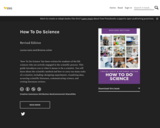
Revised Edition
Short Description:
'How To Do Science' has been written for students of the life sciences who are actively engaged in the scientific process. This guide introduces you to what it means to be a scientist. You will learn about the scientific method and how to carry out many tasks of a scientist, including: designing experiments, visualising data, accessing scientific literature, communicating science, and writing literature reviews.
Long Description:
How To Do Science has been written for students of the life sciences who are actively engaged in the scientific process. This guide introduces you to what it means to be a scientist. You will learn about the scientific method and how to carry out many tasks of a scientist, including: • designing experiments to test a hypothesis • performing simple statistics • visualising data by creating graphs and tables • accessing scientific literature, and using referencing software • communicating findings from original investigations through research papers, posters and oral presentations • writing literature reviews and summaries • communicating science to the non-expert audience
Word Count: 34892
ISBN: 978-0-6453261-3-0
(Note: This resource's metadata has been created automatically by reformatting and/or combining the information that the author initially provided as part of a bulk import process.)

Why are humans the only species to have language? Is there something special about our brains? Are there genes that have evolved for language? In this talk, Jeff Elman, UCSD professor of cognitive science and co-director of the Kavli Institute for Brain and Mind, discusses some of the exciting new research that helps us understand what it is about human language that is so different from other animals' communication systems, and what about our biology might make language possible. (58 minutes)
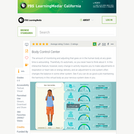
Throughout the day, your nervous system monitors and makes endless adjustments to your body's basic systems -- all to keep you alive. This interactive feature illustrates the complexity of such a task.
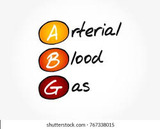
Arterial blood gases, basic overview.
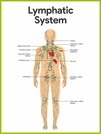
Basic lymphatic organs of the human body.

Endocrine organs and basics of the hormones secreted from the main endocrine organs.
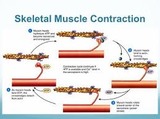
Skeletal muscle contraction.

Tissues of the human body. Overview of the Muscle, epithelial,nervous and connective tissue.
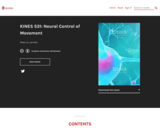
This book is a cloned version of KINES 200: Introductory Neuroscience by Peter L.E. van Kan, Ph.D., published using Pressbooks under a CC BY (Attribution) license. It may differ from the original.

Word Count: 8253
(Note: This resource's metadata has been created automatically by reformatting and/or combining the information that the author initially provided as part of a bulk import process.)
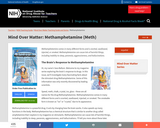
Methamphetamine is a powerful drug. It acts by changing how the brain works. It also speeds up many functions in the body. Methamphetamine has a chemical structure that is similar to another drug called amphetamine that I explore in my magazine on stimulants. Methamphetamine can cause lots of harmful things, including inability to sleep, paranoia, aggressiveness, and hallucinations.

During the past decade, there have been dramatic advancements in the brain and cognitive sciences. For the first time, understanding how the brain works has become a scientifically achievable goal. In this new lecture series, Grey Matters: Molecules to Mind, San Diego's leading Neuroscientists explore the human brain. The first lecture in this series addresses an issue that has often been absent in these discussions: what role do stem cells play in development of the brain? (59 minutes)
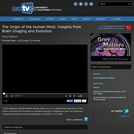
UCSD cognitive scientist Martin Sereno takes you on a captivating exploration of the brain's structure and function as revealed through investigations with new advanced imaging techniques and understandings of evolution. (57 minutes)
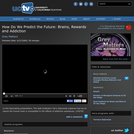
In this fascinating presentation, The Salk Institute's Terry Sejnowski explores how by its nature the human brain is susceptible to the effects of addictive substances. (59 minutes)
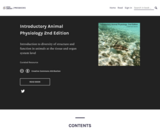
Introduction to diversity of structure and function in animals at the tissue and organ system level
Word Count: 59742
(Note: This resource's metadata has been created automatically by reformatting and/or combining the information that the author initially provided as part of a bulk import process.)
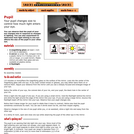
In this activity, learners explore their eye pupils and how they change. Learners use a magnifying glass, mirror, and flashlight to observe how their pupil changes size in response to changes in lighting. Learners also experiment to determine how light shining in one eye affects the size of the pupil in their other eye. This resource guide includes background information about pupils and why they change as well as information related to emotional stimuli, involuntary reflexes, and photography.
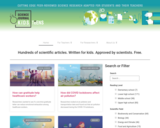
Hundreds of scientific articles. Written for middle and high school students. Approved by scientists. Free.